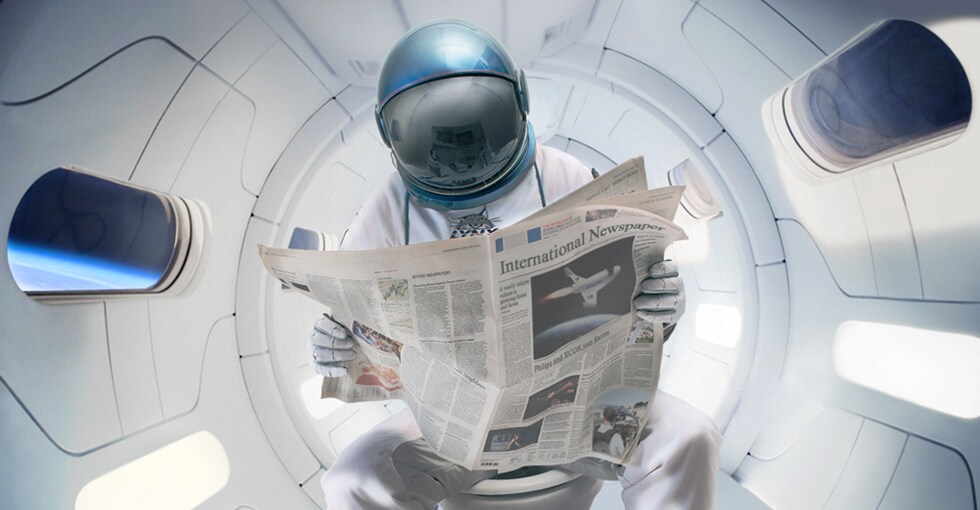Everyone knows that space is a zero-gravity environment. There’s no up or down. Unless they hold on to a fixed object, astronauts in the International Space Station (ISS) just float around. So how do they do all the normal things that people do every day down here on earth? Is everything possible, yes or no?
Shaving
Yes, but be careful. Nobody wants to breathe in your shaven stubble, or get a cloud of tiny whiskers in their eyes. Philips recognized this issue way back in the days of Apollo 11, and developed a device that would safely vacuum up the shaven hairs. Called the MoonShaver, it was sent to NASA for Neil Armstrong and his fellow astronauts to take into space.
Brushing your teeth
Yes. Squeeze out a blob of water from your water bottle, hold your toothbrush head so that the fibers absorb the water, then swallow the excess water. You’ve now got a wet toothbrush. Squeeze a small amount of toothpaste onto it and start brushing. Why a small amount? Because once you’ve finished brushing, you’re going to swallow everything that’s in your mouth. It’s neater than spitting it all into a cloth and throwing it away. And toothpaste isn’t poisonous.
Sleeping
Yes. There’s no day or night in space, although you can see it happening on your home planet. You don’t need a pillow or a mattress to sleep in space, and you don’t even have to lie down (remember? There is no up or down.). Just zip yourself into a sleeping bag that’s attached to the wall of your sleeping pod, and then literally drift off to sleep.
Functioning
Yes and no. Being weightless upsets lots of bodily systems. It´s common for astronauts to feel sick at first. Bone mass shrinks if you don´t put any weight on your limbs, and muscles waste away. The longer you stay in space, the more difficult you find it to function when you return. You can run on the ISS treadmill to stay in shape, although you’ll need to tie yourself down to avoid bouncing straight off it.
Using the toilet
Urine is precious, so you don´t waste it. You enter the toilet cubicle, shut the door and choose one of two color-coded hoses. The yellow one is for No. 1s, and the larger red one is for No. 2s. Each hose exerts a slight amount of suction to ensure that your contribution ends up in the right place. Urine is recycled into drinking water, while the remaining waste is stored until it can be offloaded.
Eating
Yes, but don’t expect haute cuisine at this altitude. What you get is dehydrated meals that you need to add water to, or ready-made food that you spoon out of a bag. It doesn´t stay on the spoon though – once it´s out, it floats and you have to grab it with your mouth. Meals with gravy get kind of messy.
Drinking
Yes. You can’t pour water into a glass, but you can suck it out of a bag via a straw. And it’s delicious: after all, it’s probably made up of sweat and urine from yourself and other crew members. Purifying bodily fluids allows the ISS to recycle an extra 6,000 liters of water each year, thereby avoiding having to import that amount of water 400km into space. And the recycling system is so effective that the water which comes out of it may be cleaner than the tap water you drink on earth.
